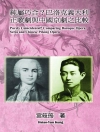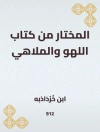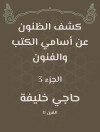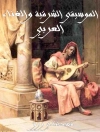Maurice Maeterlinck described his libretto Ariane et Barbe-bleue as ‘a sort of legendary opera, or fairy [opera], in three acts.’ In 1907, Paul Dukas finished setting Maeterlinck’s libretto to music, and the opera’s Paris premiere was lauded as a landmark in operatic history.
Ariane & Bluebeard: From Fairy Tale to Comic Book Opera offers a comprehensive, interdisciplinary look at this historic opera, including its structure, reception, and cultural implications. This lively collection juxtaposes chapters from experts in music, literature, the visual arts, gender studies, and religion and philosophy with vibrant illustrations by comic artist P. Craig Russell and interviews with performers and artists.
Featuring material from newly discovered documents and the first English translation of several important sources, Ariane & Bluebeard allows readers to imagine the opera in its various incarnations: as symbolist show, comic book, children’s fairy tale, and more.
Table des matières
Acknowledgments
Introduction
1. Ariane et Barbe-bleue: A Dramatic and Musical Overview, by Matthew Gordon Brown and Thomas Emil Homerin
2. The Genesis of Ariane et Barbe-Bleue, by Matthew Gordon Brown
3. Performing Ariane et Barbe-Bleue: From Premier to Orchestral Suite, by Matthew Gordon Brown
4. A Feminist Opera? Women’s Rights and Women’s Wrongs in Maurice Maeterlinck’s and Paul Dukas’ Ariane and Bluebeard, by Jean Elisabeth Pedersen
5. Maurice Maeterlinck and the Mystical Ariane, by Thomas Emil Homerin
6. Maeterlinck and Plato’s Cave, by Nicholas Gresens
7. Ariane et Barbe-Bleue and the Legacy of Richard Wagner, by Matthew Gordon Brown
8. Singing Ariane: An Interview with Katherine Ciesinski, by Katherine Ciesinski and Matthew Gordon Brown
9. Bluebeard, or Female Curiosity? Not the Same Old Story, by Andrea G. Reithmayr
10. Reflections on Comic Book Opera: P. Craig Russell’s Ariane and Bluebeard, by Thomas Emil Homerin
11. An Adaptation of an Adaptation: Table Top Opera’s Live Production of Ariane and Bluebeard, by Matthew Gordon Brown
Appendices
Albert Flament, »Ariane’ dans les ruines de St-Wandrille, ‘ Femina 163 (1 November, 1907), 484–85. English translation by Sébastien Cornut.
Henri Duvernois, ‘Les femmes de Barbe-Bleue, ‘ Femina 153 (1 June, 1907), 246–249. English translation by Sébastien Cornut.
Lucien Fugère, ‘La vie du théâtre, ‘ Musica 55 (April 1907), 53–55. English translation by Sébastien Cornut.
Paul Dukas, ‘Ariane et Barbe-Bleue, ‘ La Revue Musicale (numéro spécial) (May-June, 1936), 4–7. English translation by Timothy Scheie.
Montrose J. Moses, ‘The Wife of Maurice Maeterlinck, ‘ Metropolitan Magazine 34 (March, 1912), 38–52.
Georgette Leblanc-Maeterlinck, ‘The Later Heroines of Maurice Maeterlinck, ‘ Fortnightly Review 93 (January 1910), 48–56. English translation by Alexander Teixeira de Mattos.
Bibliography
Contributors
Index
A propos de l’auteur
Matthew Brown is Professor of Music Theory at the Eastman School of Music. He is author of numerous articles and five books, including Debussy Redux: The Impact of His Music on Popular Culture (IUP). In 2011, he founded Table Top Opera, a multimedia chamber ensemble based at the Eastman School of Music.
Th. Emil Homerin was Professor of Religion and Former Chair of the Department of Religion and Classics at the University of Rochester. His works include a number of books and articles on Islam, Arabic literature, and mysticism. He is author (with Joy Calico and Matthew Brown) of ‘Comic Book Opera: P. Craig Russell’s Salome in a Production by Table Top Opera’ in The Opera Quarterly.












